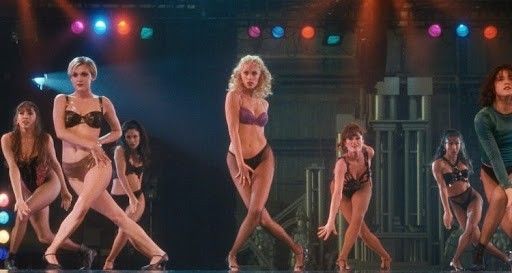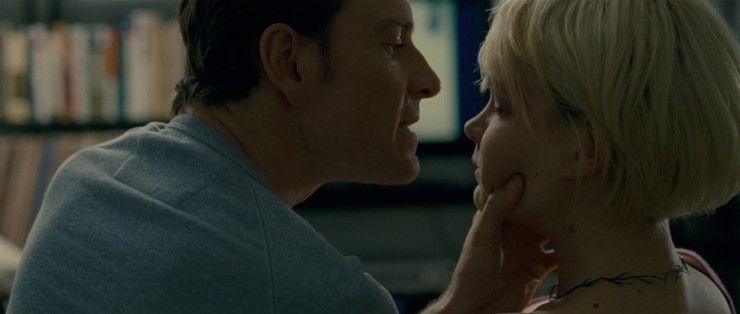
When you go to the movies, do you check the ratings?
What was the first R-rated movie you saw? I have to think back, and I remember seeing Black Hawk Down in theaters in 8th grade. And I think The Terminator in 6th grade on VHS. Now, those are not too provocative of films, but they did come with my Dad explaining things to me after.
I don’t know which was more awkward: the stuff about war crime and violence or the stuff about traveling in time and making love to your best friend’s mom and becoming his father.
But we talked. Now, I’m a semi-well-adjusted adult.
The point is, both those movies were rated R, meaning, as someone under 17 years old, I could not get in without a parent. They were movies made for adults. Entering those movies, I knew there would be things I had not encountered in the world that I would have to reflect on.
That’s what great art does. It challenges us and causes us to deal with things to greater understand the human experience.
Recently, I read an article that suggested that while movies are already rated, they should come with more detailed trigger warnings, and I wanted to explore that idea today.
So let’s dive in.
Should Your Movie Come With a Trigger Warning?
Before we get into this dense topic, we should answer a pretty important question: What is a trigger warning?
A trigger warning is a notice or advisory provided before the presentation of content that may evoke strong emotional or psychological responses in some individuals. Its purpose is to alert readers, viewers, or listeners to the potential presence of content that could be distressing, offensive, or triggering for certain individuals due to their personal experiences, trauma, or sensitivities.
Trigger warnings are typically used to give people an opportunity to prepare themselves or make an informed decision about whether to engage with the content.
They are commonly employed in various forms of media, such as articles, blogs, videos, social media posts, books, lectures, or discussions that touch upon sensitive topics like violence, sexual assault, abuse, self-harm, suicide, racism, or other potentially distressing subjects.

Do Trigger Warnings Belong in Film and Television?
This is a bit of a loaded question. I think we already have them! The MPAA, which I think is skewed and flawed, already exists in the United States. Other countries have their own version of this system as well. But its rating system is pretty detailed.
Here is the current rating system of the MPAA:
-
G (General Audiences): Films rated G are suitable for all ages. They contain no or minimal content that could be considered objectionable or unsuitable for children.
-
PG (Parental Guidance Suggested): Films rated PG may contain some material that parents or guardians might find unsuitable for young children. It suggests that parents should provide guidance and decide whether the content is appropriate for their child.
-
PG-13 (Parents Strongly Cautioned): Films rated PG-13 may contain material that parents may find inappropriate for children under 13 years old. Some content, such as violence, brief nudity, or mild language, may be included, but it should not be excessive or graphic.
-
R (Restricted): Films rated R require viewers to be at least 17 years old, or they should be accompanied by a parent or guardian. These films often contain intense or graphic violence, strong language, sexual content, or other adult themes.
-
NC-17 (No One 17 and Under Admitted): Films rated NC-17 are restricted to viewers who are 18 years or older. These films may include explicit sexual content, persistent strong language, or graphic violence that goes beyond what is typically seen in an R-rated film.
With each of these ratings comes a list of why a movie received which rating. They’re called “content descriptors.” They will detail why the movie received the rating, things like adult activity, harsh language, intense graphic violence, drug abuse, and nudity are taken into account.

So What do Trigger Warnings Add?
Well, I think proponents would say they add specifics. This is what specifically happens in these movies and TV shows, and it might cause you some emotional harm. And I don’t want anyone to feel bad or have a negative interaction with a movie or TV show.
The sad truth of this world is that horrible things happen to people. And sometimes, when we see these things recreated in film and television, they can connect with us in a way that brings back these memories or experiences.
But I also think when you decide to engage with art you are assuming a risk. Art might move you! Art might challenge you! It might shock you!
And art may also hurt you.
That’s why it’s the ultimate expression of the empathy machine. Movies and TV are made to tap into your experience.

We Can Have It Both Ways
I will admit when I started writing this article, I was vehemently against trigger warnings before movies. If something is rated R or NC-17, it’s for adults. It’s going to have scenes in it that are complicated, challenging, and difficult. In an era filled with trailers and clips online, you know what a movie will be about going into it.
So why do you need more explanation of a title? Where is the personal responsibility to seek out what might affect you and do research on the topic? Do we need to add trigger warnings to the entryway of art museums and galleries?
That’s the rant I believe in, it’s one that I typed out here because I still think most of it is true. I am also worried that I’m being way too binary about it.
The thing is, if you’re a director and want to put a trigger warning before your film, I’m all for it.
If you want to put one in the trailer, I’m all for it.
My worry stems from the idea that another entity should be independently telling people what happens in your project and how it might affect you. I think that would encourage censorship and negatively affect the kinds of things that were made.
I think that decision should be left to the artist. and I’m also against freaking out at people calling for trigger warnings on movies and TV shows because I think it’s okay to warn people about the content.
If you have specific things that bother you, and you see an explicit rating, there are a lot of websites that can help you decide if a movie is for you, without the onus being on the filmmaker to tell you.
Places like Does The Dog Die and Screen It give details about what happens in new titles.

Where Does this Leave Us?
If you’re a filmmaker and you think the audience would benefit from a trigger warning, I’m all for it. Do it and feel good about it. If you don’t want to put one on, I get it and skip it. There’s no right or wrong choice here unless an outside source comes in and forces you to do it.
It’s a complicated idea that does not have a right or wrong answer. I learned a ton writing this and I hope to continue to learn as we go.
In terms of No Film School readers, I wonder if when you’re making something, you consider adding a trigger warning to your content? Do you feel the need to let people know about certain plot points or scenes?
Reach out and let me know.














